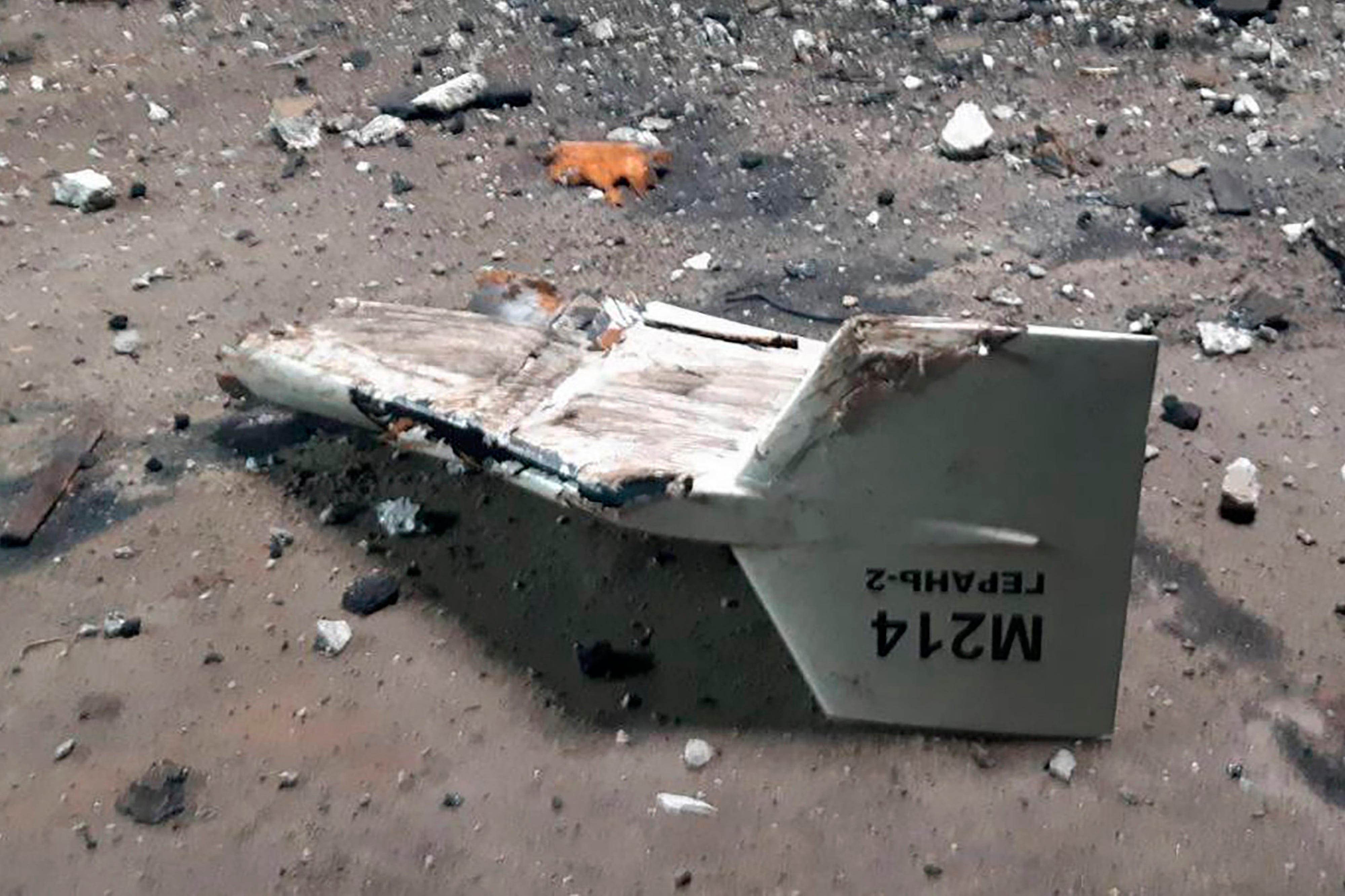Russia and Iran are planning to build a factory within Russia to produce thousands of Shahed-136 drones, which Moscow will use to continue its campaign to destroy Ukraine’s critical infrastructure. While the U.S. and its allies have provided Ukraine with air defense systems, Washington should also help Kyiv flip the script on Russia.
The key is to develop, mass-produce, and transfer Shahed-like drones to Ukrainian forces, enabling them to overwhelm and strike Russian targets in occupied Ukraine at the scale and frequency required to help defeat the invasion.
The Shahed-136 is an Iranian-developed suicide drone that Tehran transferred to Russia, along with its smaller cousin, the Shahed-131. It is a propeller-driven, carbon-fiber airframe that typically relies on satellite guidance, can carry a warhead of up to 40 kilograms, and has a range of around 1,000 kilometers. Most of its components are Western-made, commercially available and not particularly complex, keeping production costs low, reportedly $20,000 to $30,000 per drone.
Perhaps due to this simplicity, Western militaries have mostly overlooked such systems — but that is a mistake.
Essentially a propeller-driven cruise missile, the Shahed-136 serves a similar role as Tomahawk cruise missiles, primarily striking operational or strategic targets from standoff distance. While Tomahawks have superior range, speed, and warhead size, they cost up to $2 million each, roughly 100 times more than a Shahed. Using massed attacks of low cost Shaheds in conjunction with cruise missiles, Russia has overwhelmed Ukrainian air defenses and forced Ukraine to expend scarce interceptor missiles.
Russia has used Shaheds to strike bridges, fuel-storage facilities, and even frontline targets, but they have likely done the most damage by striking electrical sub-stations. While Ukraine is reportedly downing between half to three-fourths of incoming Shaheds, many still get through. Reportedly, Moscow is seeking to secure hundreds or even thousands more.
While the United States is bolstering Ukraine’s air defenses, defense alone is insufficient. Kyiv needs a Shahed-like capability to strike Russian military targets well behind the frontlines, especially bases in Crimea, which are mostly outside the range of the Ground Launched Small Diameter Bomb.
With such drones, Ukraine could attack targets such as ports, airbases, and supply nodes beyond the range of its currently fielded weapons. Examples include Sevastopol Naval Base, the port of Berdyansk, Russia’s logistics hubs in Luhansk and Dzhankoi, and the Saki, Belbek, and Gvardeyskoye airbases in Crimea. Hitting these targets would diminish Russian combat power, disrupt command and control, impede logistics, and force the redeployment of finite air defense assets. Put simply, it’ll help Ukraine win the war faster.
Indeed, Ukraine has already conducted sporadic drone strikes on Russian military targets in occupied Crimea and elsewhere using what appear to be long-range suicide drones. The Ukrainian military has attacked Sevastopol naval base and Belbek airbase in Crimea several times, and strikes on the Engels-2 and Dyagilevo airbases damaged multiple aircraft. While Kyiv lacks enough drones for a major air campaign, these operations provide proof of concept and should be scaled up dramatically.
Unfortunately, the U.S. military does not appear to field systems, at least in large quantities, directly analogous to the Shahed-136. Washington has provided Kyiv with the Switchblade-300 loitering munition and plans to send the larger Switchblade-600, but these systems have much smaller warheads and shorter ranges. The Gray Eagle, a system U.S. senators are pushing the Biden administration to provide, is roughly similar to the Turkish TB-2, which Russian air defenses have rendered largely ineffective as a strike platform since early in the war. Details of the Phoenix Ghost program are scarce, but if it were providing Ukraine the ability to conduct an extensive air campaign behind Russian lines, that fact would be readily visible in open sources.
Kyiv is working on building its own answer to the Shahed-136, but Ukraine’s defense industry has limited capacity, thanks in part to Russian attacks on factories. In fact, the CEO of a Ukrainian drone company said in October that only 20 percent of the military’s demand for drones had been met. Kyiv continues to lose drones in battle, so the shortage almost certainly persists.
However, the United States has the necessary industrial capacity to fill this gap. If industry avoids the dual pitfalls of overengineering and low production rates that have bedeviled many recent procurement programs, Ukraine could receive large quantities of drones in short order.
Iran builds Shaheds from commercially available components to simplify design, accelerate production, and reduce costs — and U.S. industry should do the same. While sophisticated seekers, guidance systems, and engines would improve the functionality of the drones, what Ukraine needs is a “good enough” solution delivered quickly at scale, not an exquisite solution delivered after the war ends.
Iranian factories have a production rate of 150 Shahed-136s per month, according to a Ukrainian military-affiliated source. But Ukraine needs thousands of similar weapons. If Washington moves quickly and keeps the design simple, it should be able to meet this need, enabling Ukraine to use masses of drones in each attack, compared to Russia’s current rate of only two or three dozen per salvo.
As the United States rediscovers its role as the arsenal of democracy, the Biden administration should provide Ukraine with the weapons it needs now, not look for optimal solutions that will take years to develop. Necessity is the mother of invention, and what Kyiv needs now is a way to strike Russian forces throughout occupied Ukraine with large quantities of relatively inexpensive munitions. That’s exactly what a mass-produced U.S. version of the Shahed-136 would provide.
Ryan Brobst is a research analyst at the Foundation for Defense of Democracies.








